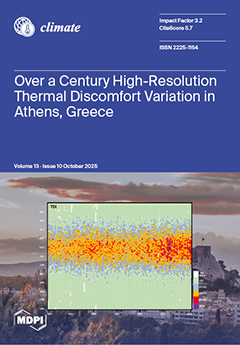This study examines the impacts of climate change on fisheries and aquaculture in Bangladesh, one of the most climate-vulnerable countries in the world. The fisheries and aquaculture sectors contribute significantly to the national GDP and support the livelihoods of 12% of the total
[...] Read more.
This study examines the impacts of climate change on fisheries and aquaculture in Bangladesh, one of the most climate-vulnerable countries in the world. The fisheries and aquaculture sectors contribute significantly to the national GDP and support the livelihoods of 12% of the total population. Using a Critical Literature Review (CLR) approach, peer-reviewed articles, government reports, and official datasets published between 2006 and 2025 were reviewed across databases such as Scopus, Web of Science, FAO, and the Bangladesh Department of Fisheries (DoF). The analysis identifies major climate drivers, including rising temperature, erratic rainfall, salinity intrusion, sea-level rise, floods, droughts, cyclones, and extreme events, and reviews their differentiated impacts on key components of the sector: inland capture fisheries, marine fisheries, and aquaculture systems. For inland capture fisheries, the review highlights habitat degradation, biodiversity loss, and disrupted fish migration and breeding cycles. In aquaculture, particularly in coastal systems, this study reviews the challenges posed by disease outbreaks, water quality deterioration, and disruptions in seed supply, affecting species such as carp, tilapia, pangasius, and shrimp. Coastal aquaculture is also particularly vulnerable to cyclones, tidal surges, and saline water intrusion, with documented economic losses from events such as Cyclones Yaas, Bulbul, Amphan, and Remal. The study synthesizes key findings related to climate-resilient aquaculture practices, monitoring frameworks, ecosystem-based approaches, and community-based adaptation strategies. It underscores the need for targeted interventions, especially in coastal areas facing increasing salinity levels and frequent storms. This study calls for collective action through policy interventions, research and development, and the promotion of climate-smart technologies to enhance resilience and sustain fisheries and aquaculture in the context of a rapidly changing climate.
Full article





